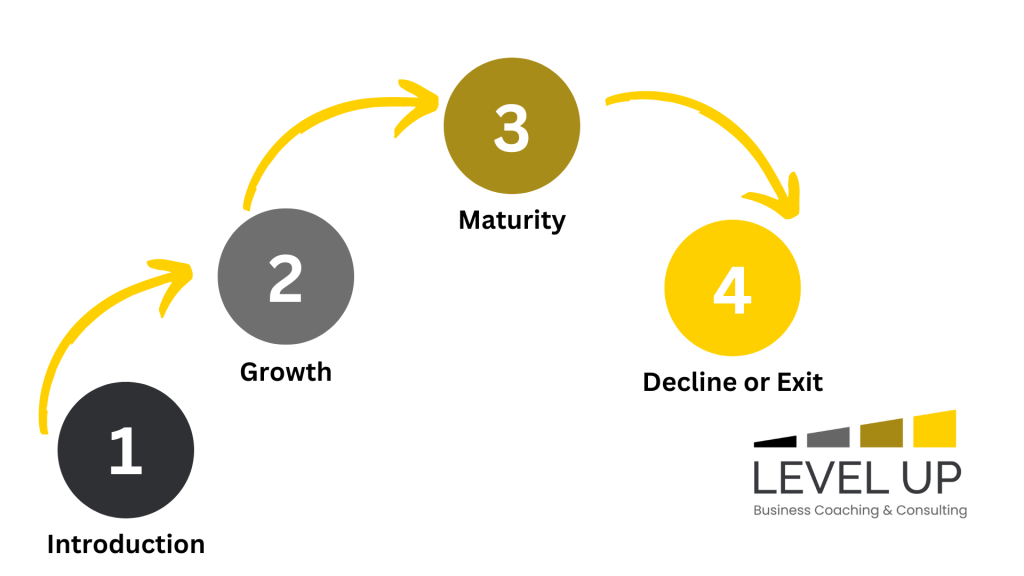I’ve written previously about “Navigating the Franchise Lifecycle: Advice for New Franchisees”, which focused on the first two stages of the life cycle; introduction and growth. In these initial stages, everything is new and exciting. There tends to be a lot of positive energy as franchisees learn to effectively manage and grow their businesses. Today, we turn our focus on the latter two stages: maturity and exit and provide insights on how to navigate these stages effectively. These stages come with their own unique challenges, but also present opportunities for continued growth and long-term contentment.
Stage three
At the maturity stage, it might be tempting and easy to take your foot off the pedal. However, it’s important to stay on top of the changing market environment. There will be industry shifts, new franchise innovations, and ever-evolving consumer trends. Follow the guidance set out by the franchisor, especially when it comes to rolling out new business initiatives. It’s natural to have questions and concerns, but it’s also prudent to recognize when you are pushing back on things simply because change is uncomfortable and you don’t want your boat being rocked. The franchisor has your best interests at heart and the interests of the growth and profitability of the whole business; so, trust them to do the right thing.
This is also a great time to look internally. Refine your own operations, boost the efficiency in your business and look at ways to increase both revenues and profits. The maturity stage can last months or even years and one of the worst things that can happen is stagnation. For this reason, aim to keep expanding. Explore options to open additional units. But ensure your original unit is stable and you have smooth operations before expanding.
Stage four
As suggested in the name, the decline or exit stage signals the beginning of the end of running your franchise business. If you plan your exit in advance and recognize the approach of decline before it actually occurs, you should be able to sell your business for a profit and walk away content. Difficulties arise if you become burnt out, frustrated, with little motivation to continue to operate your business. When this happens, your business will decline in value and, as you push for a quick sale, you’ll make less than you feel you deserve for all the years of hard work you’ve put in. Avoid this at all costs.
To avoid burnout in the first instance, you’ve got to stay passionate. There are different ways to achieve this. Firstly, try maintaining a solid relationship with other franchisees in the business. These connections help by celebrating the highlights, discussing the challenges and successfully climbing out of the low points. Make a point of regularly revisiting both your long-term plan (where you are headed, including exit) and think back to why you bought into the franchise business in the first place. If you no longer feel the way that you did when you first began or your future plans are no longer congruent with the direction the franchisor is taking the business, it might be time to enact your exit strategy.

A quick tip before we delve into your exit strategy and something which can help you to avoid burnout in the first place: create a succession plan. This is a deliberate plan to both make you the “least important person in the business” and ensure there are pathways for transitioning members of staff into key roles if someone else unexpectedly leaves. Deliberately building a succession plan enables you to take regular breaks throughout the year so you can rest and recuperate, while also ensuring that your business continues to operate in the event that personal reasons take you away from it. Life happens. It’s good to be prepared for the unexpected.
Finally, your exit strategy should form an integral part of your overall business plan and be documented from day one. If you don’t have one, get it in place immediately. This might sound counterintuitive, but it’s far better to understand and plan for exit while you’re still passionate about the business and thinking clearly, compared to when you’re burned out, frustrated and angry. Exiting via sale is the most desirable way to go. You’ll want to make a return on your initial investment. Be prepared that selling your business takes a lot of time and is almost as time-consuming as running the business itself. This is another reason why succession planning is effective; at the point you decide to sell, you will have the time to focus on this. Moreover, if you are no longer required for the day-to-day operations to continue, this increases the valuation of your business.
Conclusion
While the early stages of a franchise are exciting and require intense focus, always keep an eye on the future. Understanding the challenges of maturity and planning for the decline or renewal stage from the start will help you to avoid common pitfalls. Think long-term, stay adaptable and always have a plan for growth, succession and exit in your back pocket.








